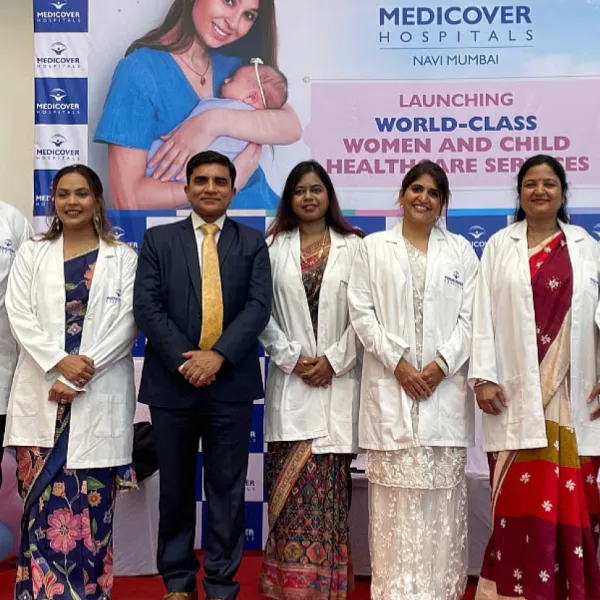Voice AI in Healthcare: A New Interface for Patient Engagement & Clinical Access

In a bustling outpatient clinic in Bengaluru, a doctor speaks with a patient while a small device on the desk quietly listens. There’s no typing, no interruption, just conversation. Meanwhile, behind the scenes, a voice-enabled AI assistant captures the dialogue, updates the patient’s electronic medical record, and suggests follow-up actions. For the physician, it is one less task in a day packed with too many.
This isn’t science fiction; it is the emerging reality in Indian healthcare, where Voice AI is carving out a powerful role as both an assistant and a bridge. As hospitals and health tech startups race to meet patient demand, voice technology offers a new interface for clinical access and patient engagement. For a country grappling with a doctor-to-patient ratio well below global standards, this shift is more than convenient—it is necessary.

Voice, Transcribed: AI in Clinical Documentation
The first frontier for Voice AI in India is documentation. For many clinicians, time spent filling out medical records often means time taken away from patients. Voice-to-text applications now promise to lighten this burden. Platforms like Augnito, already deployed in major hospital networks such as Apollo and Fortis, boast over 95% accuracy and are remarkably attuned to Indian accents.
Beyond transcription, some companies are pushing further. Bengaluru-based HealthPlix has introduced H.A.L.O., an ambient AI solution that listens during consultations, extracting key medical information without interrupting the natural flow of conversation. Doctors can now generate prescriptions without lifting a pen or tapping a screen. It is still in its early days, but pilots in multispecialty hospitals show promise, especially as H.A.L.O. expands to support multiple Indian languages.
The Dragon Ambient eXperience (DAX) Copilot, launched by Microsoft, builds on this idea by offering real-time transcription and automation of clinical note-taking using ambient listening. Already used globally, its entry into Indian hospital systems reflects the growing appetite for tools that ease administrative overload.
Amid rising concerns over physician burnout, this technology offers a reprieve. In a system where the average doctor-patient consultation lasts just two minutes, AI-driven tools may help restore some of that lost time to meaningful care.
Talking Care: Voice AI Meets the Patient
The power of voice lies in its simplicity. Voice-based tools can feel more intuitive and human for patients, especially those less comfortable with written forms or digital interfaces. Hospitals like Apollo 24|7 are already using voice assistants to help patients schedule appointments, refill prescriptions, and get basic health advice. Their WhatsApp-based AI assistant saw a 49% jump in appointment bookings, proving that good design meets people where they already are.
For elderly patients and those with visual impairments, voice-led engagement can be transformative. Sankara Eye Foundation, for instance, launched SAHAI, India’s first AI-powered voice-based patient feedback system. This solution enables patients, particularly those with limited literacy, to give feedback in regional languages through simple voice commands. The system aims to enhance patient experience and help hospitals monitor satisfaction levels in real time.
Wysa, an AI mental health app developed in India, has raised $20M to expand globally. It uses AI-driven conversations to identify emotional distress, scaling access to care in ways traditional models have struggled to achieve. The chatbot has facilitated over 400 million conversations across 65 countries, offering early, anonymous emotional support. It is integrated into NHS (UK) services and is backed by investors like Google and Amazon. Wysa also plans to expand multilingual and voice-based experiences, helping bridge mental healthcare gaps, especially in underserved regions like India, where only around 10,000 professionals serve over a billion people.
Meanwhile, researchers across global institutions, including the Mayo Clinic, Harvard, and the University of South Florida, are training AI models to diagnose conditions like Parkinson’s, diabetes, depression, and even cancer from short voice clips. This includes Indian cohorts, too, where a study showed over 80% accuracy in detecting type 2 diabetes from 10-second samples. Recordings of phone conversations, coupled with basic health data like age, BMI, and gender, helped the program make a diagnosis. These tools analyze subtle vocal cues—pitch, pauses, and tone—to pick up on early signs of physical and mental health conditions.
Automating Operations Through Voice AI
Healthcare systems aren’t just clinical; they are operational. In a space riddled with paperwork, voice technology adds a layer of clarity and proximity. From managing appointment calls at Narayana Health to assisting with discharge summaries at Apollo Hospitals, AI voice assistants are skillfully streamlining the back end.
Solutions like Microsoft’s DAX Copilot demonstrate how real-time voice transcription can reduce documentation time and enhance clinician efficiency, turning passive listening into productive output.

Ethical, Linguistic, & Legal Hurdles
Despite all said and done, the rise of voice AI in healthcare is not without its complications. Processing spoken data means dealing with intensely personal information. The stakes are exceptionally high in mental health and diagnostic applications, where errors can go unnoticed or unchallenged. Although India’s Digital Personal Data Protection (DPDP) Act offers a starting point, the regulatory landscape for health-specific AI tools remains vague.
Then, there is the challenge of language itself. India’s rich tapestry of dialects can trip up even the most sophisticated systems. Misinterpretation, especially in a clinical setting, can have serious consequences. Developers are working on inclusive datasets, but accuracy, bias, and oversight remain live concerns.
What’s Next for Voice AI
The next wave of innovation may lie in diagnostics and remote patient monitoring. At IIT Madras, researchers are training multilingual voice models to better understand India’s linguistic complexity. These efforts could unlock new possibilities for screening, especially in underserved regions where access to specialists is limited.
In a landmark move, IIT Madras, AI4Bharat, and Sarvam AI collaboratively launched IndicVoices, a comprehensive speech dataset encompassing 7,348 hours of audio from 16,237 speakers across 145 Indian districts, covering 22 languages. Funded by the Ministry of Electronics and Information Technology’s Bhashini initiative, this dataset aims to enhance voice recognition AI, powering models like IndicASR for all scheduled Indian languages.
Hence, in rural India, where language barriers and digital literacy issues remain significant, such developments in Voice AI hold the potential to make healthcare more accessible.

Voice AI isn’t just a new tool in the healthcare kit but a new language for care. In India, where gaps in access, literacy, and infrastructure run deep, its potential to democratize healthcare is real.
But for this promise to be fulfilled, deployment must be thoughtful. Accuracy must trump speed. Privacy must be guarded. And human connection, often eroded in the rush to digitize, must remain at the center because in healthcare, sometimes the most powerful technology is the one that listens.
Stay tuned for more such updates on Digital Health News.
Stay tuned for more such updates on Digital Health News





























